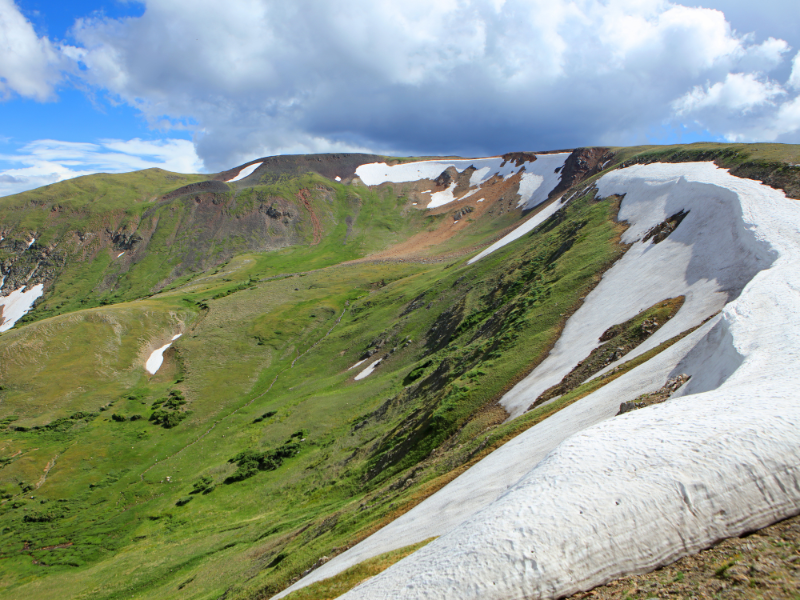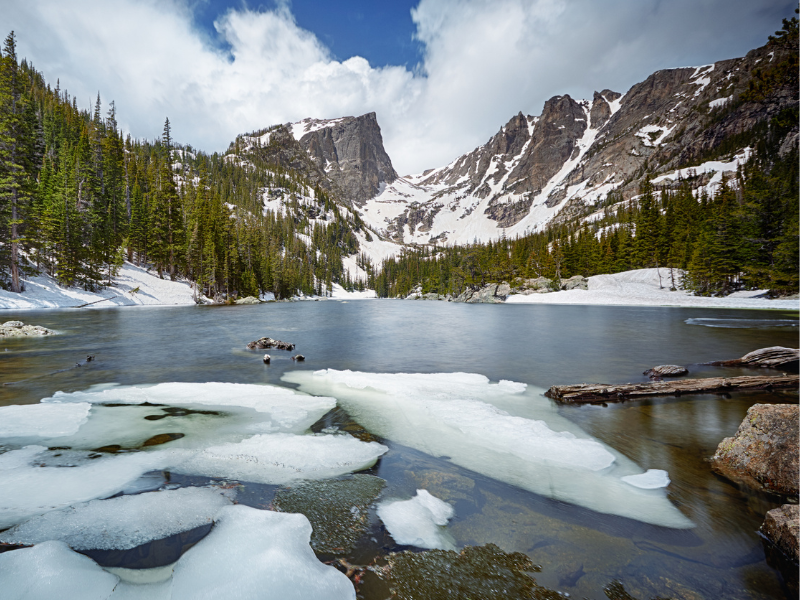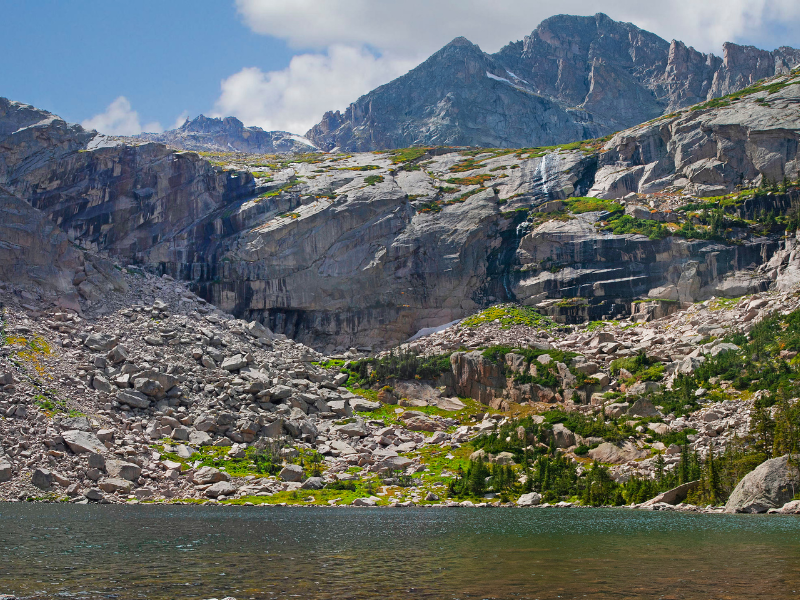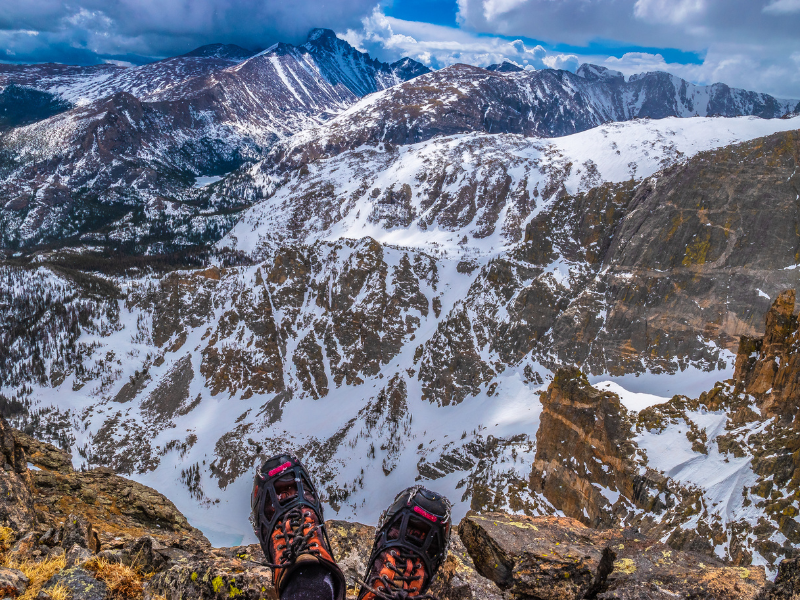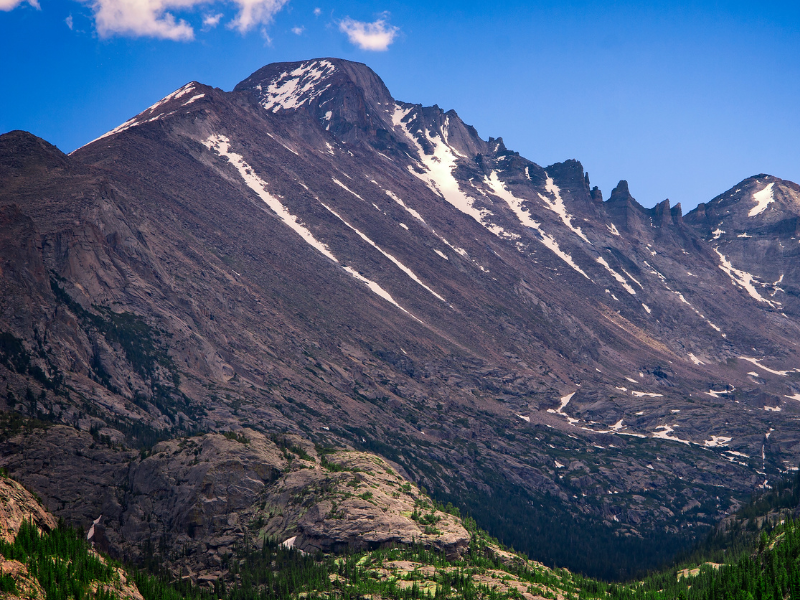Top 5 Must-Do Hikes at Rocky Mountain National Park
Looking for the best hikes at Rocky Mountain National Park to explore during your visit? Here, at Kirks Mountain Adventures, our expert hiking guides in Estes Park have put in the miles and time on the hikes at Rocky Mountain National Park, and we’re happy to share our top list of trails with you. From stunning alpine peaks to short trails for beginner hikers, we have hiked nearly every corner of RMNP. If you’re an avid hiker or just starting, here are the top 5 must-do hikes at Rocky Mountain National Park, each providing a unique and exciting experience.
1. Alpine Ridge Trail
Distance: 0.6 miles (round trip)
Elevation Gain: 200 feet (starts at 11,786 feet above sea level)
Difficulty: Easy
Trailhead: Alpine Visitor Center Parking Area
The Alpine Ridge Trail is the quintessential trail in the heart of Rocky Mountain National Park, offering a short hike on a well-maintained trail to the top of a stunning vista overlooking the Never Summer Mountains and more. Ideal for those seeking breathtaking views without an exhaustive journey, this trail provides a perfect introduction to the park’s alpine wonders.
As you ascend the well-maintained path, you’ll quickly find yourself above the tree line, opening up to a world of awe-inspiring vistas. The trail’s brevity makes it accessible to hikers of all levels, while the elevation gain of 200 feet ensures a gentle climb. Once at the top, you’ll be treated to a 360-degree panorama of the park, with majestic mountains, expansive meadows, and the unique beauty of alpine tundra stretching as far as the eye can see. This trail is a photographer’s delight, capturing the essence of Rocky Mountain grandeur in every frame.
2. Nymph, Dream & Emerald Lakes
Distance: 3.2 miles (round trip)
Elevation Gain: 700 feet
Difficulty: Easy-to-Moderate
Trailhead: Bear Lake Parking Area
Embark on a journey of serenity with the Nymph, Dream & Emerald Lakes trail, a captivating out-and-back hike that introduces you to the enchanting beauty of three stunning sub-alpine mountain lakes nestled in the Rockies. This moderately challenging hike weaves through lush landscapes, offering a perfect balance of effort and reward.
The trail begins with a gradual ascent, guiding you to the first jewel, Nymph Lake, where the reflections of towering peaks dance upon thepristine water. Continuing the loop, Dream Lake unveils itself, a tranquil oasis surrounded by the grandeur of the mountains. The final gem, Emerald Lake, sits in a stunning amphitheater of rocky peaks, providing a fitting conclusion to the journey.
3. Mills Lake & Black Lake
Distance: 9.6 miles (out and back)
Elevation Gain: 1,400 feet
Difficulty: Moderat-to-Strenuous
Trailhead: Glacier Gorge Junction
For the adventurous spirits seeking a more extended and challenging hike at Rocky Mountain National Park, the Mills Lake & Black Lake trail beckons with its promise of diverse landscapes and alpine wonders. This strenuous hike at Rocky Mountain National Park takes you on a transformative journey, unveiling the raw beauty of the Rockies.
The trail meanders through scenic mountain views, traverses alpine meadows adorned with vibrant wildflowers, and culminates in the awe-inspiring presence of two pristine lakes—Mills Lake and Black Lake. And for those looking for an extra challenge, find the trail to the east side of Black Lake to continue on to Frozen Lake. For a little bit more effort and navigation along a poorly marked trail, you’ll be rewarded with an unforgettable alpine adventure at Frozen Lake.
4. Flattop Mountain to Hallett Peak
Distance: 10 miles (out and back)
Elevation Gain: 3,324 feet
Difficulty: Strenuous
Trailhead: Bear Lake Parking Area
Embark on a challenging yet immensely rewarding hike at Rocky Mountain National Park with the Flattop Mountain to Hallett Peak trail. This strenuous hike takes you to the summit of Hallett Peak, where the world unfolds in a breathtaking panorama, showcasing the splendor of hiking at Rocky Mountain National Park.
The trail begins with a steady ascent, traversing diverse landscapes and offering glimpses of the surrounding beauty. As you reach the summit of Hallett Peak, the reward becomes evident—a 360-degree spectacle of rugged mountains, alpine meadows, and expansive valleys. This trail is a testament to the park’s fame as a bucket list hiking destination as towering peaks pepper than alpine landscape in every direction.
5. Longs Peak
Distance: 14.5 miles (out and back)
Elevation Gain: 4,854 feet
Difficulty: Very Strenuous
Trailhead: Longs Peak Trailhead
Longs Peak stands as the pinnacle of hikes at Rocky Mountain National Park, reserved for the seasoned and determined adventurer. This very strenuous trail is an epic journey that leads to the summit of the park’s highest peak, offering unparalleled vistas and an overwhelming sense of accomplishment.
Undertaking the Longs Peak trail via our preferred Keyhole route requires skills preparation and a high level of fitness. The hike at Rocky Mountain National Park encompasses a variety of terrains, from alpine meadows to rocky expanses, testing both physical and mental endurance. As you stand atop the summit, the reward is immeasurable—the vast expanse of the Rockies unfolds beneath you, and the sense of achievement is unparalleled. This trail is a true testament to the power and beauty of Rocky Mountain National Park, demanding respect and preparation from those who dare to conquer it.
What to Bring on a Rocky Mountain National Park Hiking Trip?
To ensure a safe and enjoyable hiking experience, make sure to bring the following essentials:
Water: Stay hydrated at high altitudes. Either a large water bottle or hydration pack will do.
Appropriate Clothing: Dress in layers to adapt to changing weather conditions. A rain jacket is a must, as afternoon thunderstorms are common in the high country of Rocky Mountain National Park.
Sturdy Hiking Boots: Comfortable and supportive footwear is crucial on the rugged trails.
Bug Spray: Protect yourself from mosquitoes, especially in the warmer months of summer like June through August and September on some years.
Sunscreen: The sun is intense at higher elevations experienced while hiking at Rocky Mountain National Park; protect your skin.
What is the Best Hike in Rocky Mountain National Park for a Beginner?
For beginners, the Alpine Ridge Trail is an excellent choice. It’s short, easy, and offers stunning views without a strenuous climb. And to make it even better, there are interpretive signs along the way, providing for an education adventure!
Can I Hike in Rocky Mountain National Park Without a Reservation?
To enter Rocky Mountain National Park from late May through mid-October in 2024, there are two types of permits available:
- Bear Lake Corridor Pass – allows access to entire corridor and the rest of Rocky Mountain National Park. Reservation period is available from 5 am to 6 pm.
- Rest of Park Pass – this pass does not allow access to the Bear Lake Corridor but allows access to the rest of the park from 9 am to 2 pm.
Timed entry permits can be reserved at recreation.gov and will be available on the following dates:
May 1st (8 am MT) – reservations will be available to enter the park from May 24 through June 30.
June 1st (8 am MT) – reservations will be available for the month of July and any remaining days that have not been booked for June.
July 1st (8 am MT) – reservations will be available for the month of August and any remaining days that have not been booked for July.
Aug. 1st (8 am MT) – reservations will be available for the month of September and any remaining days in August that have not been booked.
Sept. 1 (8 am MT) – reservations will be available for October and any remaining days in September that have not been booked.
How Do I Prevent Altitude Sickness in Rocky Mountain National Park?
To prevent altitude sickness, acclimate yourself gradually by spending a day or two at higher elevations before attempting strenuous hikes. Stay hydrated, avoid alcohol, and listen to your body. If symptoms persist, descend to lower elevations.
Enjoy your hike at Rocky Mountain National Park, and always prioritize safety and preparedness!
Guided Hikes at Rocky Mountain National Park
Looking for hiking at Rocky Mount National Park but want the guidance of a Estes Park hiking expert? Look no further! When you book a guided hike in Rocky Mountain National Park with one of our expert Estes Park hiking guides, we provide all the necessary navigation skills, food and beverage, education, and guidance necessary to safely explore the Colorado backcountry.


